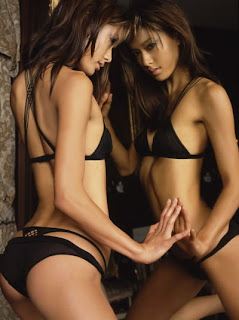Zen Photography - Being At One with Your Camera
Back in the summer of 1979, I met a man who automatically did everything that was manual with his photography. He set the film speed, shutter speed, and f-stop for every picture he took. While this is not totally unheard of, as far as I could tell he never used a light meter. He was at a point in his life where he was so used to taking pictures that he could "feel" what was right for a given light situation.
We were out shooting in the California desert one day when the battery in my camera had died and I had forgotten to pack a spare. He noticed that I stopped taking pictures. Without lifting his eye from the viewfinder, he commented, "Go ahead, it’s about a plus two." I stared at him blankly. I had no idea what he meant.
Eventually, he stopped what he was doing and explained. I was shooting ASA speed film of 125, so that was also my starting shutter speed. When shooting totally manual the rule is simple: film speed = shutter speed + f-16. What he told me about "plus two" was that the rule is designed to give you an average reading for average light; since we were shooting in brighter than average light, I should increase the f-stops by two. So, my ideal exposure in that given light; was 125 shutter speed, with an f-stop of f-32.
I felt embarrassed to say, "But this lens doesn’t have an f-32, it only goes up to f-22."
He glanced at me briefly like he thought I was kidding, and then softly replied, "You have two settings don’t you?" I nodded my head, so he raised an eyebrow and said, "Then change the other one."
I took my shot at 250 shutter speed and f-22. It came out great and I was totally amazed. It took me some time to realize what he was doing. Basically, he was bracketing in his head. He had already taken so many thousands of shots, that he knew what the camera considered as an average light scene, and he adjusted up or down from there.
He was also aware enough to remember there are (at least) two major controls in every shot. I had gotten lazy; I was used to shooting in aperture mode, where I pick the f-stop and the camera does the rest. But as he pointed out, shutter speed and f-stops are like the clutch and gas petal in a car. They have to work together, to be effective.
So what does this have to do with today’s high tech digital world? Everything. If you are shooting a very light skinned person and you want your photo to be realistic, what should you do? Remember that your camera exposes for 18% gray (an average reading). You might want to give your subject more light than what the meter suggest.
On the other hand, say you are doing a very dramatic close-up of a flower, and part of what attracted you was the deep dramatic shadows of the existing light. If you just shoot with what your camera tells you, those shadows are going to seem flat. Why, because you are never going to get a true rich black in your picture, unless you adjust for it.
We were out shooting in the California desert one day when the battery in my camera had died and I had forgotten to pack a spare. He noticed that I stopped taking pictures. Without lifting his eye from the viewfinder, he commented, "Go ahead, it’s about a plus two." I stared at him blankly. I had no idea what he meant.
Eventually, he stopped what he was doing and explained. I was shooting ASA speed film of 125, so that was also my starting shutter speed. When shooting totally manual the rule is simple: film speed = shutter speed + f-16. What he told me about "plus two" was that the rule is designed to give you an average reading for average light; since we were shooting in brighter than average light, I should increase the f-stops by two. So, my ideal exposure in that given light; was 125 shutter speed, with an f-stop of f-32.
I felt embarrassed to say, "But this lens doesn’t have an f-32, it only goes up to f-22."
He glanced at me briefly like he thought I was kidding, and then softly replied, "You have two settings don’t you?" I nodded my head, so he raised an eyebrow and said, "Then change the other one."
I took my shot at 250 shutter speed and f-22. It came out great and I was totally amazed. It took me some time to realize what he was doing. Basically, he was bracketing in his head. He had already taken so many thousands of shots, that he knew what the camera considered as an average light scene, and he adjusted up or down from there.
He was also aware enough to remember there are (at least) two major controls in every shot. I had gotten lazy; I was used to shooting in aperture mode, where I pick the f-stop and the camera does the rest. But as he pointed out, shutter speed and f-stops are like the clutch and gas petal in a car. They have to work together, to be effective.
So what does this have to do with today’s high tech digital world? Everything. If you are shooting a very light skinned person and you want your photo to be realistic, what should you do? Remember that your camera exposes for 18% gray (an average reading). You might want to give your subject more light than what the meter suggest.
On the other hand, say you are doing a very dramatic close-up of a flower, and part of what attracted you was the deep dramatic shadows of the existing light. If you just shoot with what your camera tells you, those shadows are going to seem flat. Why, because you are never going to get a true rich black in your picture, unless you adjust for it.



Comments